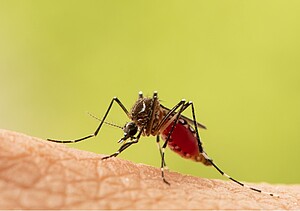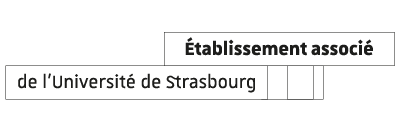Aedes aegypti mosquitos are the principal vectors for dengue fever virus and other arboviruses, including the Zika virus, and for which there are no treatments. In a study published in Nature Microbiology, a research team from the Institute of Molecular and Cellular Biology*, in partnership with the Federal University of Minas Gerais in Brazil, has analysed the full range of viruses present in 800 mosquitoes on a global scale. They show that out of the 12 viruses identified, two do not infect humans but they do increase the potential transmission of dengue and Zika viruses. The mechanism involved reveals the existence of a new cellular factor diverted by the arboviruses in mosquitoes.

By using a high-speed RNA sequencing technique, coupled with a bio-informatics analysis according to a method developed in their laboratory, the researchers have conducted an analysis of the viruses present in Aedes mosquitoes worldwide. In order to be able to collect over 800 mosquitoes from 12 different sites in six countries and four continents, they relied on a network of colleagues, most of whom participate in the ZIKAlliance European consortium. This has made it possible to identify 12 circulating viruses that have been found in these mosquitoes, of which five have not been analysed to date.
The researchers’ attention was drawn to two of these 12 viruses, the Phasi Charoen-like virus (PCLV) and the Humaita Tubiacanga virus (HTV), mainly due to their high prevalence. In order to find out whether these two viruses could have an impact on the transmission of the dengue virus, the scientists concentrated their efforts on a small town in the south-east of Brazil, Caratinga, where the dengue virus is endemic and where an archived collection of RNAs from over 500 mosquitoes collected there over the space of a year was made available to them. The analysis revealed an interaction of the HTV and PCLV viruses with the dengue virus – mosquitoes infected with the HTV and PCLV viruses were three times more likely to also be infected with the dengue virus.
Preventing epidemics
The scientists then confirmed this observation in the controlled environment of the Strasbourg insectarium. By means of mathematical modelling, the investigators were able to suggest that this increased infectious capacity could multiply the risk of transmission of the dengue and Zika viruses by five when HTV and PCLV are present.
While studying the gene expression in dengue-infected mosquitoes, whether in the absence or presence of HTV and PCLV, scientists have discovered the important role of histones (proteins that join together with the DNA to compact it and form the chromatin). Their results show that the dengue virus uses histone H4 to multiply among mosquitoes.
“A better knowledge of the molecular mechanisms that govern the interaction between these three viruses seems essential for the continuation of our research activities. To understand what encourages the transmission of the Zika and dengue viruses could help in suggesting more efficient strategies to reduce the transmission of the virus to humans, and to limit – or even prevent – epidemics”, concludes João Marques, newly appointed Inserm research director and last author of the study.
-
Read the full study in Nature Microbiology.
* IBMC groups together three research units affiliated to the French National Centre for Scientific Research (CNRS). It is supported by the University of Strasbourg and the French National Institute of Health and Medical Research (Inserm).
This article was originally published in French in Savoir(s), the University of Strasbourg's news corner: Vers une meilleure compréhension des mécanismes de transmission des virus Zika et de la dengue (31/01/2023).















